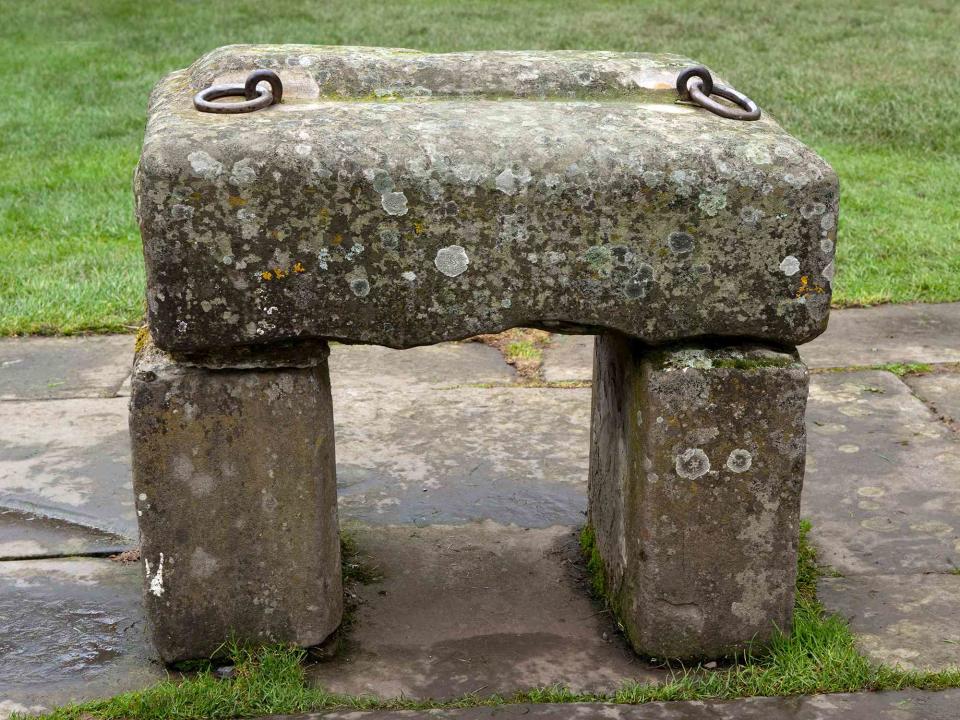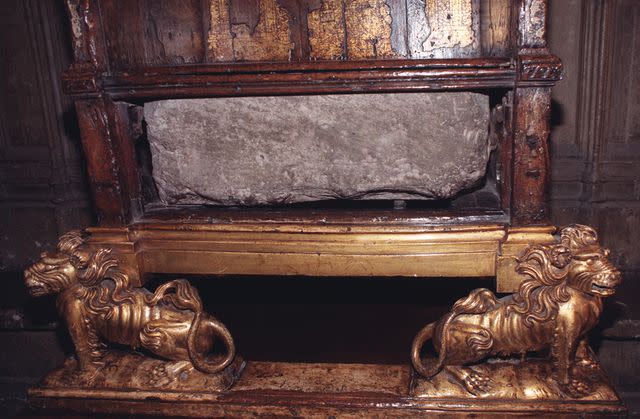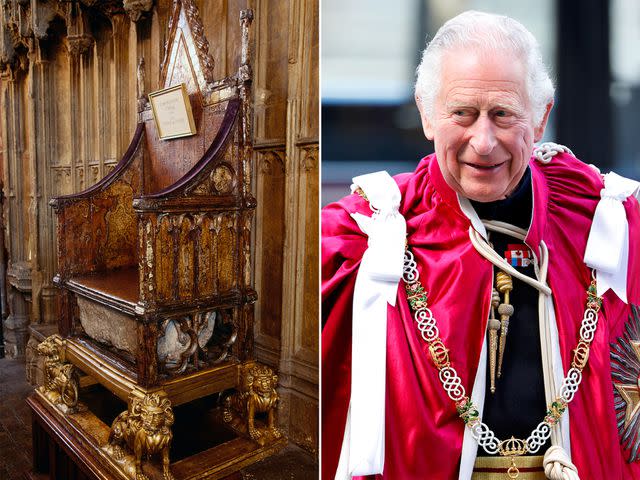Stone of Destiny Travels from Edinburgh Castle in Scotland to Westminster Abbey for Coronation
A fabled historical relic has returned to London ahead of King Charles and Queen Camilla's coronation

The upcoming coronation of King Charles is steeped in centuries of British tradition. And now, another significant element of the celebration has arrived at Westminster Abbey in advance of the May 6 ceremony: the Stone of Destiny, which will be placed underneath the Coronation Chair where King Charles will sit when he is crowned.
Also called the Stone of Scone (pronounced "skoon") or the Coronation Stone, it is kept in the Crown Room at Edinburgh Castle in Scotland, but the stone made its way back to London ahead of the crowning ceremony. Its arrival at Westminster Abbey on Saturday was heralded with a special service conducted by the Dean of Westminster, the Very Reverend Dr. David Hoyle.
While it may appear to be a nondescript slab of rock, the gray block has a history that may date back to biblical times, according to some legends.
Some believe that the stone is the "Stone of Jacob" detailed in the Book of Genesis. In the passage, Jacob rested on a group of stones and received a vision from God, who promised Jacob ownership of the land on which he laid.
Related: All About the Stone of Scone and Coronation Chair That King Charles Will Be Crowned On
Scottish historian William Forbes Skene, however, suggested in his 1869 essay "The Coronation Stone" that the stone traveled across what is now Europe with various groups. It was eventually brought from Ireland to Argyll, Scotland, by Fergus, the first king of the Scots. Fergus is believed to have been crowned on the stone around 500 A.D. — though this is a topic of debate among historians.
While the legend of the Stone of Scone traveling across continents was widely believed for many years, geologists who have studied the stone have disproven many of the surrounding beliefs. According to Historic Environment Scotland, a public research institution based in Edinburgh, Scotland, the stone underwent a technical examination in 1998.
Geologists determined the composition to be that of sandstone typically found in the Perthshire area of Scotland. The stone most likely belonged to the Picts before they were conquered around 843 by Kenneth I, who is considered the founder of Scotland. Kenneth moved the stone to the town of Scone, Scotland, from which it later received its name. Although the stone currently used is from Scotland, some believe that a more ancient stone exists and was hidden during wartime, per the BBC.
Although its origin may be disputed, historians agree that the relic was used in coronation ceremonies for hundreds of years. And its more recent history is rife with conflict between Scotland and England.

Related:King Charles' Coronation: All Your Burning Questions About the Crowning Ceremony Answered
During the First Scottish War of Independence in 1296, the stone was taken by King Edward I of England after he invaded the country amid political tensions. Although some question if Edward I stole the authentic Stone of Scone, the relic he captured was brought to Westminster Abbey, where it was placed in a specially made chair (now known as the Coronation Chair).
What followed was a back-and-forth with Scotland, when in 1924, Scottish politician David Kirkwood brought a bill to parliament seeking the stone's return. The bill was turned down, but the stone did return to Scotland in the 1950s when a group of students broke into Westminster Abbey and stole it.
The stone was then on display in Arbroath Abbey in Scotland until British police retrieved the stone again.
It wasn't until 1996 when then-Prime Minister John Major announced that it would finally be returned to Scotland — with Queen Elizabeth's blessing — and on Nov. 15, 1996, the stone was officially handed over at the border between England and Scotland, per CNN.
As Right Honourable The Lord Lyon King of Arms said at the ceremony welcoming the stone back to England, "The Stone was taken from its place in the Abbey of Scone to this Abbey Church in 1296 by command of King Edward I in an act of enmity. It was returned to Scotland in 1996 by command of Her late Majesty Queen Elizabeth II in an act of amity and now comes again to this place by command of King Charles III as an act of unity and a symbol of friendship."

Can't get enough of PEOPLE's Royals coverage? Sign up for our free Royals newsletter to get the latest updates on Kate Middleton, Meghan Markle and more!
During the ceremony, the Stone of Scone will be held in King Charles's coronation chair. The chair itself has had to undergo some renovations in advance of Saturday's ceremony, as it's been marked with graffiti from local schoolboys and visitors — plus there's a small piece missing from a 1914 bomb attack.
For more People news, make sure to sign up for our newsletter!
Read the original article on People.

